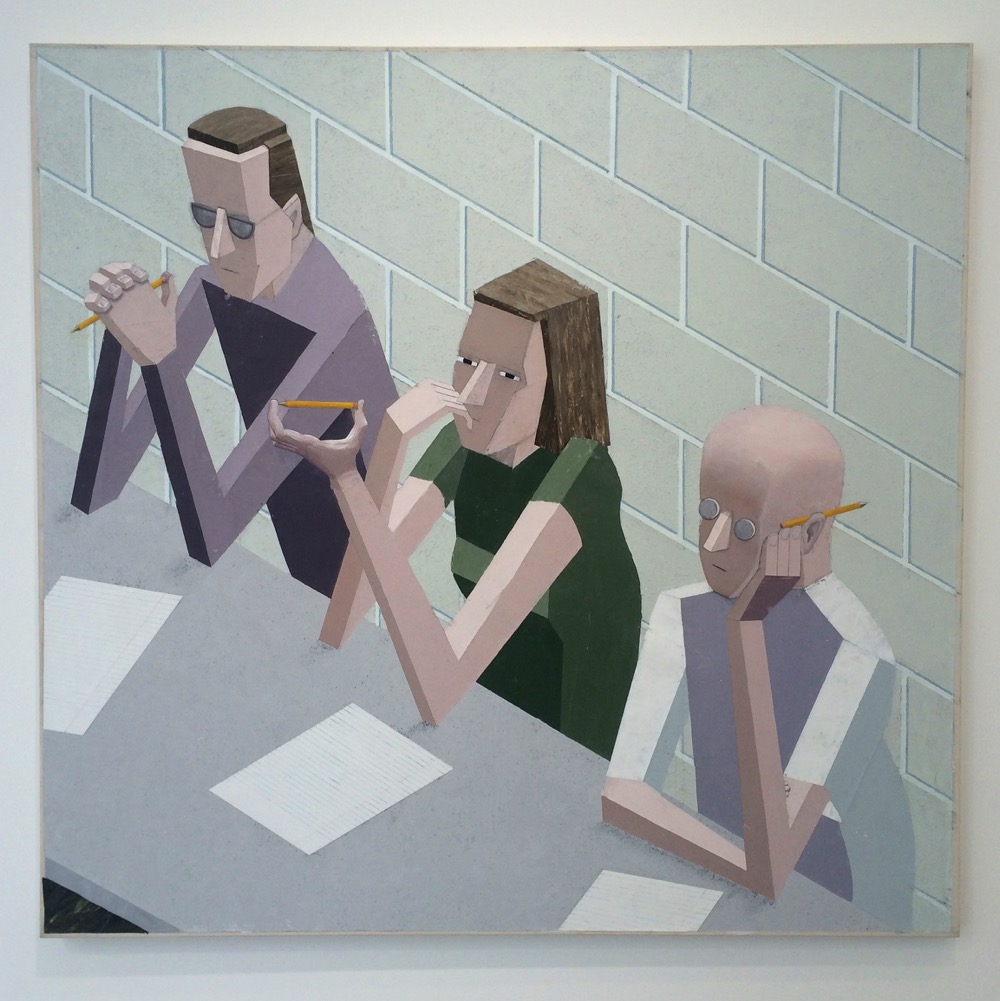A little while back, Terry Smith (Discipline, no. 3, 2013) described the ‘comedy of disciplines’ that is the contemporary art scene. His hierarchy went like this:
cultural studies
art theory
———-
art history
art criticism
curating
collecting
art dealing
studio talk
art making
What’s interesting is how Smith draws a line these days between the theorising of the top two and those further down. He was actually in the process of dissing Nikos Papastergiadis for what he read as an arrogant and too-simplistic review of Smith’s own recently published books. He was saying that theory has less veracity in the art world than it once did, and that at best it communicates from the edges of the scene.
A series of seven video recordings of a symposium titled Speculations on Anonymous Materials at the Fridericianum, Kassel, in 2014 is available on YouTube. The videos introduce five speakers, mainly contemporary philosophers, discussing the trend of ‘new materialism’ thinking and the argument along the lines that the existence or non-existence of natural objects is not contingent upon us. The ‘anonymous materials’ of the title is meant as well to catch something of the way contemporary artists are more and more using strangely tangential materials in artwork.
These videos are a beautiful six hours where each speaker attempts to describe their very complex thinking to an audience comprised largely of artists and art professionals. Terry Smith writes about the potential of artists being contingent upon the worlds around them, meaning I think that there is an obvious dependency, but the stretching to connect that happens can be madly entertaining.
One of the speakers at the Kassel symposium, Iranian philosopher Reza Negarestani, proposed that artists are essentially ‘inference jumpers’, necessarily and inexplicably jumping from one inference to another. And for him the problem lies in artists ‘over-extending conceptual resources’ to the point where, he argues, artworks need objects. Conceptual practices were too often simply art by contract. For Negarestani, art is heuristic, and has nothing to do with rote learning.
In Going Public (2010), art theorist and historian Boris Groys jumps one step further to shift the politics of art by moving past ‘the spectator’s attitude’, and its associated aesthetic privileging of the audience and viewer. Groys instead proposes the viewpoint of production and writes of the necessity to build a poetics of the producer.
Groys sees the aesthetic attitude (i.e. the spectator’s) as culminating in a sociological understanding of art. He makes clear the subordinate position that the art scene allocates to production vis-à-vis consumption. Almost everyone’s interests in contemporary art tend towards collaborative, participatory practices and tactics of project-making.
Groys suggests that we are all invariably producers nowadays. The internet makes nonsense of twentieth-century aesthetic constructs to do with the demands of contemplative viewers. There are no idle viewers any more in any real sense. ‘The politics of art,’ he argues, ‘has less to do with its impact on the spectator than with the decisions that lead to its emergence in the first place.’ It is not a conversation about where art comes from and what it looks like, and art installations are not site-specific.
Terry Smith, ‘Contemporary Art and Contemporaneity: Reflections on Method, Review of Reviews (Part 1)’, Discipline, 2013, no. 3, pp. 191–200.
Speculations on Anonymous Materials, introduction by Susanne Pfeffer & Armen Avanessian, participants Maurizio Ferraris, Markus Gabriel, Iain Hamilton Grant, Robin Mackay & Reza Negarestani, Fridericianum, Kassel, January 2014, YouTube, nos 1–7, viewed June 2015.
Boris Groys, Going Public, Sternberg Press, Berlin & New York, 2010.


